Gea Elika's Blog, page 156
December 2, 2016
3 Reasons Experts Think That Real Estate Prices Will Keep Rising

Over the last decade, home values have experienced wild rises and falls. A financial crisis, and the burst of the real estate bubble in 2006 led to a quick decline in real estate prices, with the Case-Shiller Housing Index losing 33% between 2006 and 2010. Soon after the fall, however, real estate investors realized they could buy at low prices and turn a nice profit when the market recovered. Between 2010 and 2012, the real estate market showed prices growing at about 10% per year.
There are three main reasons why real estate experts across the country predict real estate prices will continue to rise: reduced inventory of houses for sale, reduced new construction, and strict lending practices.
 Image by DavidDubov / Flickr
Image by DavidDubov / Flickr
Reduced Inventory of Houses for Sale
Fewer homeowners are listing their homes for sale, as they aren’t actively looking to trade up to a larger home. In the past, many new homeowners would buy a “first house” with plans of upgrading later to a larger home when finances allowed. With more buyers remaining in their first house long term, there are fewer homes on the market for new buyers to choose from.
Homeowners who may have considered selling their homes might be underwater on their mortgage or in a low equity situation where it doesn’t make sense financially for them to list it for sale. With fewer homes on the market, prices of available homes for sale will continue to increase, according to David Crowe, chief economist at the National Association of Home Builders.
Reduced New Construction
In a normal housing market, David Crowe says 1.6 million new single and multi-family homes are built each year. Last year, single-family homes made up just 700,000 of new construction homes when normally over a million are built annually.
Builders are still being cautious during the lengthy recovery of the real estate market and are simply not building as many homes annually as they used to, further contributing to a lack of inventory for new homebuyers to choose from and the increase in real estate prices.
Total home inventory is 9% lower than it was last year according to Zillow, even in areas where low inventory has not been a problem in the past. Nashville, Kansas City, and Raleigh are all showing lower inventory.
Strict Mortgage Lending Practices
Before 2008, banks were giving out mortgage loans to just about anyone who applied for them. While this contributed to the housing crash, the emergence of stricter lending practices and underwriting standards have made it harder for new home buyers to get approved for a mortgage loan.
A combination of reduced existing houses for sale reduced new construction and strict mortgage lending practices will continue to drive home prices up in most areas. A tight housing market drives prices up. In 2015, the Case-Shiller 20-city index shows home values rose 5.7%. The National Association of Realtors is calling for existing-home prices to increase 3.4% in 2017, while financial strategists and economists estimate total growth for 2016 to be in the 4-5% range.
The post 3 Reasons Experts Think That Real Estate Prices Will Keep Rising appeared first on .
December 1, 2016
64 East

Designed to capture the energy and feeling of the Bowery District, 64 East offers premium, full-floor living in one of the city’s most vibrant neighborhoods.
Architecture
Developed by MGM Property Group to fit into the neighborhood, 63 East has the look and feel of a heavy, old factory, reminiscent of the generation that gave us the Brooklyn Bridge. The industrial feel is tempered with light stone and clean glass, creating a masterpiece of architecture that is at once modern yet traditional.

Rendering courtesy of 64 East
Residences
The six units in this exclusive building are nothing short of spectacular. Completely open plan with large floor to ceiling casement windows and expanded ceilings to show structural beams, they’re light, open, and bright.

Rendering courtesy of 64 East
To contrast, the fixtures and detailing is all wood and cool grays, so the overall aesthetic is welcoming rather than sterile.
The quality of the building continues to the all the little details, including the Wolf 30-inch Dual-Fuel range, the Bosch dishwasher, and the Sub-Zero refrigerator.

Rendering courtesy of 64 East
In the bathroom, it’s all about refined simplicity with nickel fixtures from Waterworks’ Ludlow collection and subway tiling to offset the floating cabinetry.

Rendering courtesy of 64 East
Each unit also has a terrace for easy and private outdoor entertaining.
Amenities
All residences can enjoy access to the rooftop lounge and outdoor kitchen, providing spectacular views of the city skyline as well as access to the state of the art gym and entertainment center.
Availability
There are currently two of six units available. Both are 2 bed 3 bath units with 1,807 square feet of interior space and an additional 105 square foot terrace. Long and thin, the bedrooms are situated at the back, each with a door to the terrace while the living space is in the front. The central portion is largely functional fixtures like the elevator, stairs, and washer/dryer units. Both units are priced around $3.3 million.
Neighborhood
The Bowery is at the crux of all kinds of diverse neighborhoods, from Greenwich Village to the Lower East Side. Enjoy the best boutiques, the trendiest restaurants, and an incredible night life at your doorstep.
[ 64 East ]
The post 64 East appeared first on .
November 30, 2016
Neighborhood Spotlight: Nolita
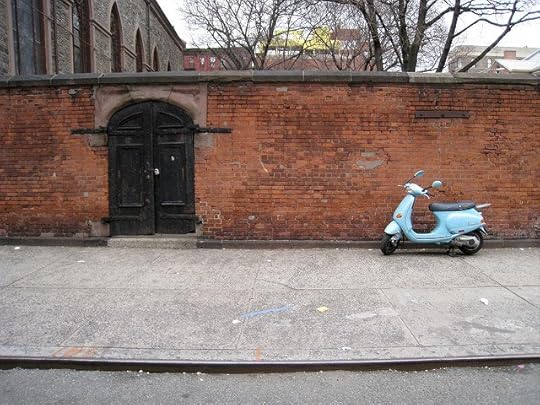
The neighborhood North of Little Italy, known as Nolita, is one of the city’s most vibrant neighborhoods. Formerly considered part of Little Italy, the area has had it’s own identity since the early 1990’s when the Italian tradition slowly drained from the neighborhood and was replaced by a younger, hipper feel. This new vibe, paired with booming retail storefronts and a fast-growing restaurant scene all blend to make Nolita the sought-after neighborhood that it is today.
The neighborhood:
Nolita’s northern-most border is Houston Street while the eastern border is Bowery. The western edge is Layfette Street, and though the southern boundary varies by opinion, it is often referred to as Broome Street.

Image by Marc Lee / Flickr
Nestled between SoHo, NoHo, the Lower East Side and Little Italy, Nolita has, in recent years, become one of the city’s most popular neighborhoods for shopping, nightlife, restaurants, and housing.
The neighborhood was formerly considered part of Little Italy but the area lost the tradition and community of the famed Italian neighborhood over time. Over the past few decades, new storefronts for restaurants, designers, and hip shops began to open thanks to affordable commercial rent compared to the surrounding areas. It was around this same time that the neighborhood got it’s new name, an acronym for North of Little Italy, created by the New York Times.

Image by Eden, Janine and Jim / Flickr
While the neighborhood now has a very similar feel to nearby SoHo, it is considered less crowded and quieter, though still has the same retail and restaurant draws. Small commercial storefronts and many residential buildings have contributed to the growth of the neighborhood as young families and young professionals now flock to the area for the sought-after apartments and luxury condos.
Things to do:
The nightlife and restaurants are one of Nolita’s biggest attractions. Renowned cafes and restaurants like Jack’s Wife Freda, Cafe Gitane, Bread, Cafe Habana, The Musket Room, and Saint Ambrose call the neighborhood home, while bustling bars like Mother’s Ruin and Sweet & Vicious draw New York locals and visitors alike.

Image by Bex Walton / Flickr
Nolita is also home to many shops and galleries that draw people to the area. Small boutiques like Condor, Creatures of Comfort and Love Adorned pepper the neighborhood, making it the perfect location to pick up a thoughtful gift or to treat yourself. Galleries abound in the neighborhood as well, like Open House on Mulberry Street that is home to rotating installations and pop-ups and the Storefront for Art and Architecture on Kenmare Street that houses events, exhibitions and art installations.
Transportation:
Another reason Nolita is such a desirable neighborhood is the easy access to all parts of the city through public transportation.

Image by Steve Isaacs / Flickr
The 6 train runs along Lafayette Street, the neighborhood’s western edge, with stops at both Bleeker and Spring Streets. The B/D/F/M trains are available at Lafayette and Houston, while the J/Z train stops just to the south at the Bowery station. A short walk away is access to the N/Q/R/W trains that service upper Manhattan and Queens.
With the plethora of subway stations in the surrounding areas, it is an easy journey from Nolita to almost anywhere in Manhattan, Queens, and Brooklyn.
What it costs:
Nolita is a fast growing neighborhood for the city’s young professionals and, more recently, families. While it is known for its traditional tenement buildings, there are now many new luxury condo developments in the area.
Because the neighborhood is very small and demand for housing is high, prices have skyrocketed in recent years. The median sale price for homes in the neighborhood on average over the past several years falls around $3 million, while the average sales price per square foot is about $2,000. The median rental cost in Nolita is about $6,500 per month.
The post Neighborhood Spotlight: Nolita appeared first on .
November 29, 2016
Advice for First Time Real Estate Investors
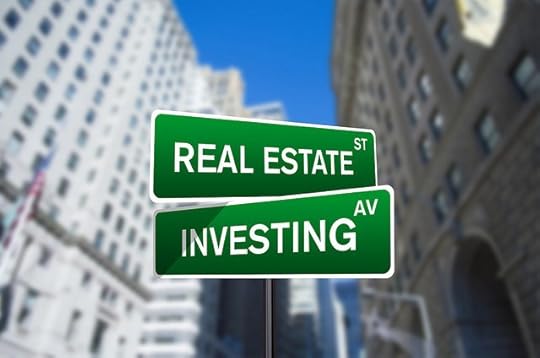
While the housing market has its peaks and valleys, as a long-term investing strategy it can often have a more stable and better return than investing in the stock market. For beginning investors, real estate can be a great strategy for planning for a lifetime of returns. However, there are some important things that beginners should know when deciding to make real estate a part of their investment strategy. These three considerations will help any first-time real estate investors get started on a path to success.
Long Term Commitment
Investing in real estate is not a get rich quick plan. It should be a long-term investment strategy. The best returns are made for those who are willing to put a dozen years or more into their real estate investment. Like with any other investment, including one made in the stock market, there can be ups and downs in the housing market. Statistically, however, the housing market has almost always rebounded when waited out. When there is a decline, we can usually see it coming over a period of 6 to 12 months. Unlike a stock market crash, which can happen rapidly, the housing market usually has a slow decline. Unlike the stock market, where a company can go out of business or where you can lose your entire investment, you will still own your property through a housing slump with little to no effect on your investment if you are willing to ride it out.

Image by Investment Zen / Flickr
Short Term Cash Flow and Long-Term Payout
Investing in rental property can have both short-term and long-term benefits. When you own a rental property, whether it is a multifamily townhouse, single family rental apartment, retail space, or mixed use commercial building, you are generating monthly income from the rental or lease payments that the tenants pay you. This is a great way to offset the monthly and yearly expenses that owning a rental unit can incur, such as taxes and repairs. Even more so, it’s an income stream, if you budget properly and bring in more than you are paying out.
As a long-term investment strategy, the money comes from the sale of the property. Over the years, you can almost always count on appreciation of the value of your property as long as you are doing your job well and making upgrades and maintaining the rental units correctly. As the market changes, you can wait for a peak and sell when the time is right. When you are ready to put your kids through college or are looking for retirement income, you can begin selling off your investment properties to use as income.
Business Mindset
Any real estate investor should take the time to learn about financing, take classes on acquisition and negotiation, and study their marketplace. Consider forming an LLC for your investments versus personally owning the properties. This protects your personal assets in the event of an injury, accident, or damage on, or to, your investment property.
Take steps to secure the needed cash flow, including minding your credit score and debt to income ratio. You wouldn’t open a business if you didn’t have the cash flow to maintain inventory or pay salaries to employees. Consider investments to be your businesses. There will be repair expenses, utility expenses for empty units, and times when updates and general maintenance will be needed. Be prepared, and you’ll have much better success than you would if you were to go in blindly.
Don’t worry about waiting for the right time. When you are planning a long-term real estate investment strategy, you’ll weather the market changes. As long as you are educated and have the money and a good deal, you should go for it. Start with one property and build your empire from there!
The post Advice for First Time Real Estate Investors appeared first on .
November 28, 2016
Gramercy Square
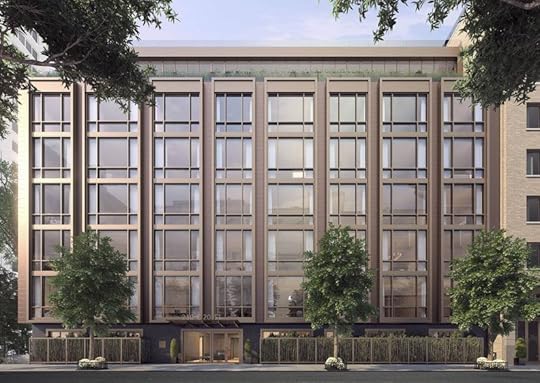
Four architecturally distinct buildings connected by green space, Gramercy Square, offers studio to four bedrooms living in the city’s oldest residential neighborhood. With impeccable design from Woods Bagot, M. Paul Friedberg & Partners, and La Palestra, Gramercy Square is the best the city has for downtown residential living.
Architecture
The complex is designed by Wood Bagot (the group who renovated T1 of San Francisco International Airport) and developed by The Chetrit Group and Clipper Equity. It’s nothing short of a work of art. It’s comprised of four buildings – the Tower, the Prewar, the Modern, and the Boutique –all completed in a different architectural style that integrates into the neighborhood while still being modern and forward-thinking.

Rendering courtesy of Gramercy Square
All brought together by the beautiful network of gardens designed by M. Paul Friedberg & Partners.

Rendering courtesy of Gramercy Square
Residences
With so many different buildings, the Gramercy has something for everyone.
The Tower
The largest of the four buildings, the Tower offers spectacular views and crisp design. Outfitted with high ceilings, expansive windows, and oak floors throughout, the Tower residences feel light, open and airy. Italian designed kitchens include top of the line appliances like Sub-Zero fridges, Bosch dishwashers, and Calacatta marble counters and backsplashes. In the bathroom, the luxury continues with Lefroy Brooks fixtures, a Kohler tub, and radiant floor heating. The Tower caters to those who want cosmopolitan living with a residential feel and a view.

Rendering courtesy of Gramercy Square
The Prewar
Built in 1931, it offers 48 buyers all the convenience of condo living with the character of a prewar building.
Classic design tailored with sleek modern detailing, the Prewar is perfect for those who love a traditional feel. Refurbished to maximize light and openness, these units use light oak wood flooring throughout, painted in the kitchen to pair with the Venatino marble used for the backsplash and counter tops. Like the Tower, the kitchen also includes the best appliances on the market with fridge and wine storage by Sub-Zero, a dishwasher from Bosch, and a microwave from Wolf. Each unit also includes a GE washer and dryer and Carrara marble walls and Lefroy Brooks fixtures in the bathroom.

Rendering courtesy of Gramercy Square
The Modern
Perfect for lovers of minimalist modernism.
More exclusive again with 37 one to four bedroom units total, the Modern focuses on clean lines, big windows and simple, refined design.
The design palette used for the Modern is significantly more streamlined then elsewhere within the development, with white oak floors, white cabinetry in the kitchen, Bianco Dolomiti white marble walls in the bathroom with Kohler sinks, and Lefroy Brooks fixtures. And of course, all appliances are top of the line – Sub-Zero fridge and wine storage, Bosch dishwasher, GE washer/dryer, and a Wolf microwave.

Rendering courtesy of Gramercy Square
The Boutique
The Boutique is the most exclusive of the four buildings, with only eight full-floor units in it. Stunning Siberian Sunset marble bathrooms with Lefroy Brooks fixtures and large rain showers let you unwind in peace. In the kitchen, the Calacatta marble backsplash gives it a sophisticated, clean look. Wolf microwave, Bosch dishwasher, and Sub-Zero fridge and wine storage round out the elegant, functional kitchen. The increased space means that the delineation between living and private space is clear, letting you entertain in comfort knowing you have a private oasis to retreat to.

Rendering courtesy of Gramercy Square
Amenities
La Palestra, who has designed wellness centers and amenities for developments all over the city, have built a communal space for Gramercy Square that is second to none in the 18,000 square foot Gramercy Club, which all four buildings have direct access to.

Rendering courtesy of Gramercy Square
Amenities include all the possible features you could need for a complete spa experience including a yoga studio, gym, and 75-foot pool to help you bulk up and a sauna, hot tub, steam room, to help you unwind afterward. The residents can also look forward to plenty of entertaining space and activities including a golf simulator, a media room, rec room, and dining, kitchen, club and lounge rooms, complete with and wine cellar.

Rendering courtesy of Gramercy Square
Availability
Currently, there are multiple units available across the four properties ranging from studios to 4 bed, 5.5 bath apartments.
Prices start at $1.2 million for a 682 square foot studio in the Tower and go up to $7.15 million for a 4 bed, 4.5 baths 3,378 square foot condo in the Boutique.
Neighborhood
Situated in Gramercy Park, Gramercy Square is close to everything while still giving resident’s a brief reprieve from the city. From restaurants like Eleven Madison Park and Library Bar & NoMad Restaurant to cultural hotspots like the Visual Arts Museum And the National Arts Club, Manhattan truly is at your doorstep.
[ Gramercy Square ]
The post Gramercy Square appeared first on .
November 27, 2016
5 Tips for Newlyweds Looking to Buy First Home

When newlyweds get married, they both leave their small studios or upgrade from their existing apartment to a better, “homier” place to live. Newlyweds spend months or even years saving, researching, testing the commute, and visiting dozens of home listings. Of course, there’s an easier way to buy your first home. Our real estate experts have tips for newlyweds looking to get started.
1. Be Realistic
This is the time when both of you need to prioritize your needs and wants. You need a home in the right neighborhood that is easy to commute from and has good schools if you plan to have children. While you may not have a family now, consider the possibility of having one in the future. Is the home you are buying one that can grow with you and provide you and your family with the best opportunities for success? Once you have answered whether that matters to you, you must be realistic about your needs and wants. Can you afford the area and space? A good real estate agent can help you find what you need at a price you can afford.
 Image by Paul Resina / Flickr
Image by Paul Resina / Flickr
2. Check Your Credit Report
When you get married, your credit reports marry, too. While that could be a good thing for one of you, it is rarely a good thing for both if credit is not talked about up front. Check your credit reports before you start talking about buying a home so no one experiences surprises later. If there are any blemishes on either report, fix them first before you start house hunting.
3. Know When and Where to Borrow
Find the right loan and take advantage of first-time homebuyer tax credits and incentives. Don’t assume that the first mortgage company to offer you a loan is the best company for your needs. Do your research. You want to look at reviews about the loan company, their first-time homebuyer programs, and their interest rates. When you are looking for your first home loan, get pre-approved first so you know how much of the home you can afford, and so you lock in the lowest interest rate possible.
4. Don’t Make it a DIY Pet Project
When you buy your first home as newlyweds, fixing it up together is not as exciting or affordable as the movies want you to believe. Buying a “fixer upper” is costly and it can drain your savings. Home ownership costs are often forgotten about because they can be unexpected. If you buy a home that needs work, many additional expenses can pop-up that you didn’t plan or budget for. Don’t forget that you are responsible for membership dues, taxes, PMI, upkeep, maintenance, insurance, and the occasional emergency. As a first-time homebuyer, you can’t stretch yourself anymore beyond that. Not only will your wallet suffer, so will your marriage. Remember to build and care for your relationship first before you take on such labor-intensive projects.
5. Hire a Real Estate Buyer’s Agent
You need a guide through this process. That is why so many newly married couples and couples that have been together for decades turn to professional guidance that only a real estate agent can offer. The real estate professionals at Elika Real Estate have years of experience working with new homeowners like yourself, so you can get the best deal for your needs and budget.
The post 5 Tips for Newlyweds Looking to Buy First Home appeared first on .
November 26, 2016
1399 Park Ave
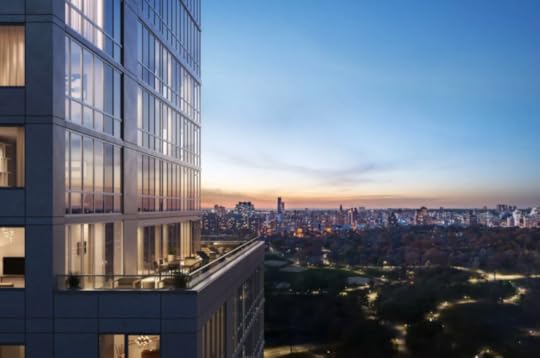
23 stories of glass and concrete, 1399 Park Avenue is a 72 unit condominium located in the fast growing East Harlem. It is the very picture of a crafted and modern building.
Architecture
Designed by Goldstein Hill & West Architects (GHWA) and developed by Heritage Real Estate Partners, 1399 Park Ave is a beautiful combination of glass, concrete, and steel that creates a modern elegance while retaining the pre-war charm so characteristic of the avenue. GHWA have managed to create something new and exciting while paying homage and respect to the history of the address for a refined, elegant construction.

Rendering courtesy of 1399 Park Avenue
Residences
The guiding theme of elegant modernism is continued from the exterior into the units themselves with Whitehall Interiors leading the design. The wide plank oak flooring and focus on grays and whites in conjunction with the engineered floor to ceiling windows to block out the noise of the city make 1399 units a calm oasis for residents to retreat to.

Rendering courtesy of 1399 Park Avenue
The kitchen is built with quality in mind, with the backsplash and counters made from Athens Silver Cream marble, oak cabinetry, and top end appliances from Bosch (fridge/dishwasher) and Thermador (range). Bosch also provided the washer/dryer.

Rendering courtesy of 1399 Park Avenue
The master bath is completed with Honed Vanilla and Blue Padua marble with Watermark providing brass fixtures while in the second bathroom, Honed Vanilla marble and Eagle gray limestone create a cool, refine space.

Rendering courtesy of 1399 Park Avenue
With modern appliances, custom fixtures, and a focus on natural quality materials, the residences are not only beautiful but timeless.
Amenities
The amenities of 1399 Park Ave are designed to make life easy for each and every resident. The building includes ample space to entertain, including an outdoor terrace, lounge, and solid polished concrete wet bar. For smaller groups, there’s a library and a billiards room. In addition to entertainment facilities, there’s also a gym and a truly wonderful kids playroom, complete with a ball pit and a climbing wall.
Availability
There are 11 units available ranging from a 521 square foot studio up to a 3,000 square foot, 3 bed 2.5 bath duplex. Prices range from $680,000 to $3.9 million.
Neighbourhood
For art, culture, green space, 1399 Park Ave can’t be beaten. Surrounded by some of the city’s best cultural centers like the Museum of the City of New York and 92nd Street Y and with Central Park just two blocks west of the Conservatory Garden and the Harlem Meer right there, it’s a perfect launching point for any adventure.
[ 1399 Park Avenue ]
The post 1399 Park Ave appeared first on .
November 25, 2016
Finding Nirvana: Looking for the Perfect Apartment Building

Searching for a New York City apartment is comparable to navigating a concrete jungle. It is made more challenging since there are more than just walls, square footage, and appliances to consider. You are entering into a (vertical) community. This means the building and its amenities are a strong consideration. We will break down the walls of the apartment building to guide you through the process.
Location, location…
This is a familiar real estate refrain, but it takes on a whole new meaning for New York City apartments. There are different definitions for a desirable location outside of the city. In the city, convenience is very important. If your building is near transportation, that is a major plus. Those on the Upper East Side can attest to this since there is currently only one subway line. Other important factors are being close to parks (Central Park is obvious, but there are other ones, too) and desirable stores are preferable due to the convenience.

Image by David Miller / Flick
The interior and exterior
The exterior can be thought of as “curb appeal,” but it entails more in the case of the city. The building should be attractive, and fit in with the community.
The interior of the building is also very important. It should be done tastefully. You can easily change the paint color of your apartment, but that is not the case for the building. The style of furniture, lighting, flooring (carpets, hardwood, etc.), and landings are just some of the things you should examine upon entering the building.
Beyond style, the building should be well-maintained. You should keep an eye on everything, with no detail too small to escape your notice. This may seem like nitpicking, but a sloppy appearance not only looks bad, it could be a precursor of a negligent staff when you need maintenance on your individual apartment. Check for peeling paint, cracks in the wall, or dirty carpet. After all, this is your first impression of the building.

Image by Philippe Ludovissy / Flickr
Service with a smile
You can also find out which management company the building uses, and check out its record. Some are notorious for providing poor service. Don’t associate a bigger management company with quality.
If the building has a doorman, he/she should be courteous and greet people with a smile. That is easy to spot, but uniforms should be neat and clean, too. Overall security is critical for you to feel safe at home.
The amenities should be something you will want and utilize. A well-equipped gym and outdoor terrace are two practical items. You are paying common/maintenance charges, so these should go to items you desire rather than something impractical and wasteful.
Digging deeper
Thus far, your inspection of the building has been pretty straightforward. It is now time to explore further and look beyond the surface.
Your eyes may glaze over at the thought of examining financial statements. You may even have trouble balancing your checkbook. But, a building’s financials are relatively easy to digest, and your broker can get you a copy. The first item to check is whether the statements are audited. Next, it is time to turn to the financial statements. The income statement will tell you whether revenue exceeds expenses or the opposite. Obviously, if is the latter, that is not a good situation since there is a loss. This could mean future hikes in your monthly maintenance/common charges or a cut in services.
If ongoing, the building is not being run efficiently. You should also check the balance sheet, and see how much cash is available, and compare it to the year-ago figure. Lastly, you will want to look at the cash flow statement to see that the building is cash flow positive and where the cash is going. A building should have a big enough reserve to withstand an emergency, such as a large repair. A well-run building will have enough reserves to cover three to six months worth of expenses.

Image by Juan Carlos Ramirez Garcia / Flickr
Next, it is time to look at the rules of the co-op or condo. Everybody will have to abide by these, and you should make sure you can live with them. While bylaws relate to the operation and governance of the co-op/condo, such as matters relating to the election of the board and frequency of the meeting, house rules focus on the quality of life issues. Essentially, these are what you can do, and what is not permissible. Ideally, these are rooted in common sense, focusing on the residents’ safety and keeping order. However, these can go overboard.
One house rule you should pay particular attention to is whether or not short-term rentals are permitted. Renters, particularly those that will not be there for an extended period, will not put the same care into the building as an owner. Also, if more than 50% of the condo units are investors, banks may be reluctant to lend, making obtaining a mortgage more challenging.

Image by Christine Chauvin / Flickr
It is now time to turn to the mix of units in the building. Ideally, you do not want to buy the biggest apartment in the building. It is an old real estate axiom to buy a smaller house in the best neighborhood rather than the largest one in a more run-down area. Also, the fewer the number of apartments in the building, the more desirable. More units mean more crowding, increased wait times for things like the elevator, and more neighbors. You will also have more competition when it is time to sell or rent your apartment.
Final thoughts
Finding the right building is a complex undertaking, with many considerations. Aside from the ones mentioned, you should also see if there is storage space. It may not be a deal breaker, but it is an item that is nice to have and a selling point when you are ready to move.
The post Finding Nirvana: Looking for the Perfect Apartment Building appeared first on .
November 24, 2016
15/35 Hudson Yards
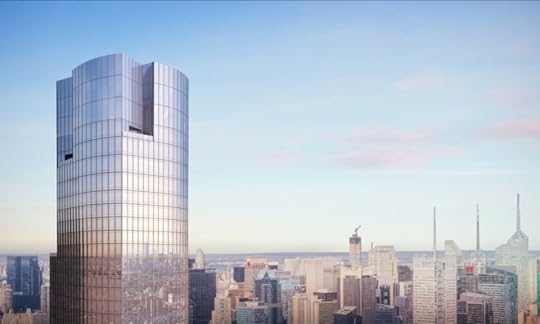
Hudson Yards is a mammoth new development, spanning seven city blocks and encompassing access to some of the best art, culture, shopping, schools, parks, and restaurants in the city.
All with beautiful views of the Hudson.
Architecture
Fifteen Hudson Yards is a collaboration between interdisciplinary design and architecture firm Diller Scofidio + Renfro (of High Line fame) the Rockwell Group (voted by Fast Company one of the world’s top 10 innovative companies) and is being developed by Related. Topping out at 88 stories and located right on the High Line, it’s a beautiful addition to the New York skyline. Built with cold bent glass to get its distinctive, curving shape, it fits beautifully into the neighborhood.

Rendering Courtesy of 15/35 Hudson Yards
In addition to the building itself, the grounds of Fifteen Hudson Yard are among the best in the city. With over 14 acres of open space within and ringed by city parks, residents have ready access to jogging paths and greenery.
Residences
The residences have been designed with understated luxury. The combination of high ceilings, beautiful views, and tasteful fixtures and finishes leads to a relaxing, refined home.

Rendering Courtesy of 15/35 Hudson Yards
Fifteen Hudson Yards also offers resident’s customization in their apartment, with buyers able to choose from a Tonal Scheme or a Contrast Scheme.
The Tonal Scheme is bright, light and airy with white oak floors, oak cabinets, and Michelangelo marble countertops, while the Contrast Scheme with black stained oak cabinets, white oak floors, and Grigio Trambiserra marble countertops and waterfall islands.

Rendering Courtesy of 15/35 Hudson Yards
In addition, both styles come with custom painted Bendheim glass backsplashes, matte finish Dornbracht fixtures, and a full suite of Miele appliances. These include a fully integrated fridge and dishwasher, oven, speed oven, and gas stove. The bigger residences come with double ovens for the passionate home cook.

Rendering Courtesy of 15/35 Hudson Yards
In the master bathroom, the commitment to simple organic material continues. Residents can choose either oak cabinetry and Estremoz stone floating vanity with the Tonal scheme or dark stained oak cabinets and Blue De Savoie stone-clad walls and vanity for the Contrast scheme.
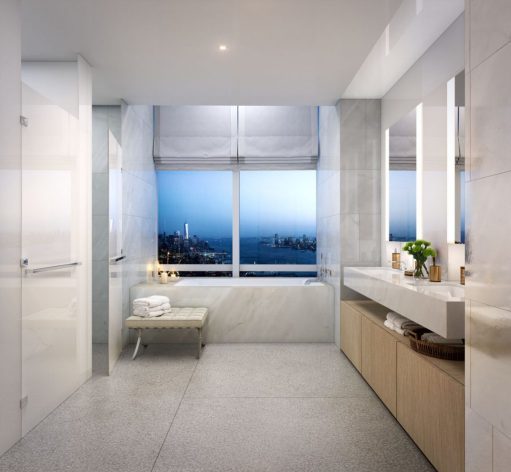
Rendering Courtesy of 15/35 Hudson Yards
The Tonal scheme is floored with brushed Italian limestone while the Contrast scheme extends the Blue De Savoie stone onto the floor. Both include radiant floor heating and a six-foot tub.
Secondary bathrooms in units are similar but use Solakas Greek marble, while the powder rooms use Nordic Bone quartzite for the floor and walls.
Amenities
Fifteen Hudson is more than just a residence. It’s been designed to almost be a city within the city. Part of that is the wellness center on the 50th floor. It includes a 75 foot, three-lane lap pool, a spa, salon, and a gym with a private yoga studio and group fitness classes.

Rendering Courtesy of 15/35 Hudson Yards
Residents can also look forward to more social amenities on the 51st floor including several lounges, private dining rooms, a club room, and a private screening room for 20 people. There’s also a golf simulator, business conference center, and wine tasting room.

Rendering Courtesy of 15/35 Hudson Yards
Behind the scenes, Fifteen Hudson Yards has been designed to make life easy. Home automation, key coded elevators for security, smartphone keyless entry, and a 24-hour concierge make things simpler. Plus, because it’s such an expansive development, fifteen Hudson comes equipped to help with anything including housing keeping, butler or florist services, personal shopping, translators, tech and delivery help, pet and plant care – the list goes on!

Rendering Courtesy of 15/35 Hudson Yards
Whatever you need, we’re willing to bet Fifteen Hudson Yards can provide.
Lastly, residents are given exclusive benefits all over the city including VIP memberships and invitations to cultural events, priority reservations at Thomas Keller restaurants, and wine cellar management by certified sommeliers.
Availability
Fifteen Hudson has five options available, ranging from one bedroom condos overlooking the High Line all the way up 5,000 square foot duplex penthouses. Regardless of what you’re looking for, every unit has soaring ceilings, luxury finishes, and comfortable master suites.
Neighborhood
Fifteen Hudson sits at the crossroads of high-energy, cosmopolitan Midtown and the slower, creative and artistic scene out of Chelsea.
The result?
It’s close to everything, no matter what you want. It’s rapidly becoming one of the best neighborhoods in the city with plenty of shopping, café, and dining options while still having a thriving nightlife.
[ 15/35 Hudson Yards ]
The post 15/35 Hudson Yards appeared first on .
November 23, 2016
What are the Benefits of Owning a Home? 6 Good Reasons

Have you been renting for a long time? Is your rent cheap? Do you have a friendly landlord? Have you been able to make modifications you wanted? Do you consider your apartment your home? If this sounds like you then why would you want to leave and find a different place to live? Well, buying a home is a smart move.
When it comes to getting ready for retirement, many financial experts have found that homeowners have the advantage. For some, saving for retirement may not be an incentive; however, owners tend to be better financially responsible overall. An example would be buying your first home when you’re 30yrs and upgrading at 35yrs. If this is the case, then you can pay off your total mortgage by 60yrs of age.
This means you have twenty-five years to pay off your entire debt. After paying off your mortgage debt, you will have the total of your monthly mortgage payment available for other purchases.

ADDTIONAL BENEFITS TO CONSIDER AS WELL
1. End of the year tax deductions
Everyone wants to save money on taxes. You get no tax breaks from paying rent, although when you buy a home, you will be able to deduct the interest your mortgage and most of your payments in the early stages that are related to interest. From April 15th, 2009, you can also deduct your property taxes; this means you can save a lot of money right away.
2. Being able to significantly increase the value of your assets
You can often realize a large Capital Gain on your home if you stay in it for up to 25 years. Statistics also show that the national home price in the U.S. has risen 200%+ since 1968. You can get this type of return on most investments. Often your home value will keep up with inflation in addition to one or two percent.
3. Building Equity
So you are trying to pay off your mortgage. In the process, you are building up equity in your home and as a result, you own more of your home as you pay off your mortgage. Again, you don’t get this benefit from renting. Your mortgage can be considered a forced savings plan which pays you back later on in life.

4. More borrowing power
If you rent you may have experienced difficulty borrowing money. Even if you get approval for any sort of loan, the interest rates are likely to be high, whereas those who own a home have something, they can use to borrow against. Homeowners are considered more secure by lenders, which is another benefit to gathering equity, the equity you build up in your home allows you to secure loans easier
5. Gaining financial Stability
The amount of rent you pay is up to the owner of the apartment which means you can negotiate terms such as no increase in rent for five years. However, when you own a home, you will be able to lock in your interest rates for up to thirty years. Homeowners know exactly what they pay each month towards their mortgage for the entire time, which you cannot do when renting.
6. Choose and make the home you want
If you have the money to pay for your home then you can make all the changes you want, you own the home so you can choose how to furnish it, decorate it and how much to spend on renovations. You won’t be fined for scratches in the paint, and you can choose to make upgrades, you won’t lose them as you would if you rented.
The post What are the Benefits of Owning a Home? 6 Good Reasons appeared first on .



